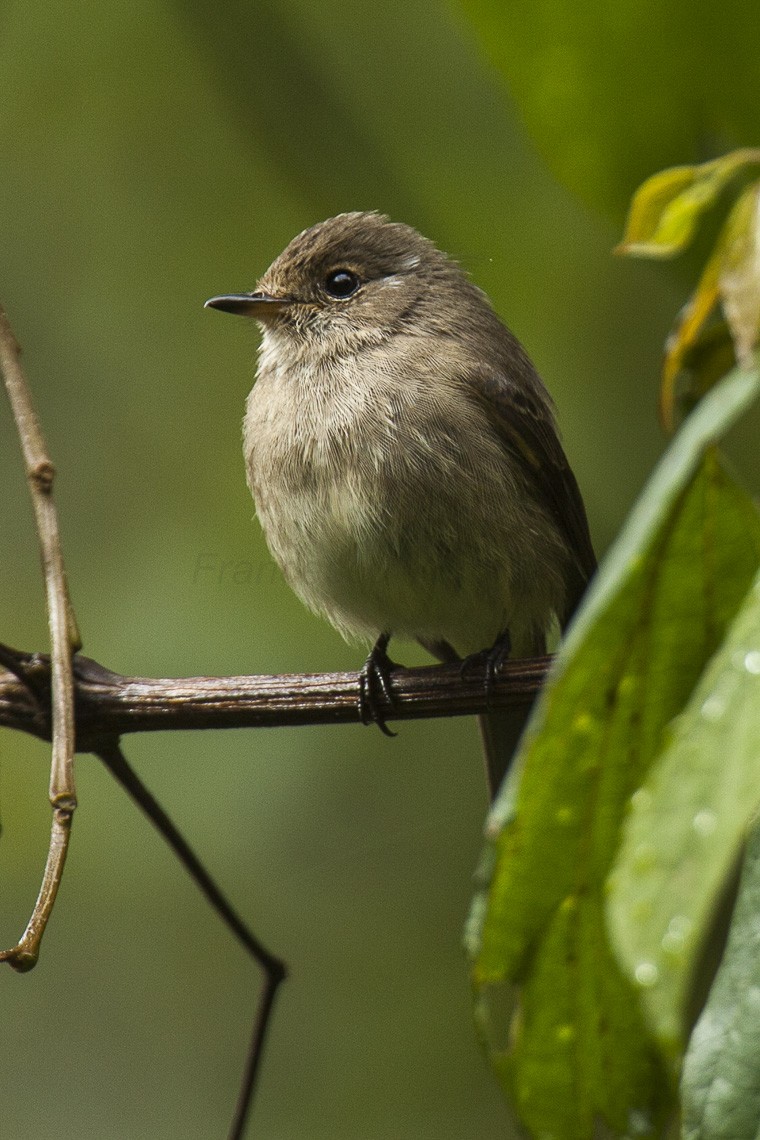African Dusky Flycatcher
A species of Typical Plain Flycatchers Scientific name : Muscicapa adusta Genus : Typical Plain Flycatchers
African Dusky Flycatcher, A species of Typical Plain Flycatchers
Botanical name: Muscicapa adusta
Genus: Typical Plain Flycatchers
Content
Description General Info
 Photo By Francesco Veronesi , used under CC-BY-SA-2.0 /Cropped and compressed from original
Photo By Francesco Veronesi , used under CC-BY-SA-2.0 /Cropped and compressed from original Description
The African dusky flycatcher is 13 cm long and weighs around 11 gm. Its upperparts are plain brown, with the only facial marking being an indistinct narrow eye-ring. The chin is plain pale grey, and the rest of the underparts are grey-brown with indistinct streaks. The short, straight, laterally flattened bill is black, the legs and feet are grey, and the eyes are brown. The sexes are similar, but the juvenile is spotted with buff above, and is whitish spotted with brown below. This species is similar to the common migrant, the spotted flycatcher, Muscicapa striata, but is smaller and darker, especially on the underparts, than that species. Spotted flycatcher also has a streaked forehead, a feature not shown by the African dusky flycatcher. The African dusky flycatcher has soft, high-pitched "tzeeet" and tsirit calls. 
Size
13 cm
Colors
Brown
Black
Gray
White
Nest Placement
Tree
Feeding Habits
African Dusky Flycatcher primarily consumes insects, capturing them in brief flights from perches. This feeding behavior represents a specialized adaptation for aerial hunting.
Habitat
The african Dusky Flycatcher thrives in ecotones, particularly at woodland edges and near water sources such as streams and rivers. It commonly resides in highland areas, from 900 to 3400 meters elevation, and is adaptable to both natural and managed landscapes, including gardens, orchards, parks, and plantations. Seasonal movements include descending to lower altitudes and varying habitats like burnt areas and termitaria thickets.
Dite type
Insectivorous
General Info
Feeding Habits
Bird food type
Behavior
The African dusky flycatcher builds a cup-shaped nest in a tree cavity a few metres above the ground, and lays two or three green eggs. The hole in the tree is normally reused in the next breeding season. This species is monogamous, mating for life. The African dusky flycatcher is usually seen singly or in pairs. It forages from an open perch for insects typically taking its prey in a short flight. 
Species Status
This common species has a large range, with an estimated extent of 2,300,000 km². The population size is believed to be large, and the species is not believed to approach the thresholds for the population decline criterion of the IUCN Red List (i.e. declining more than 30% in ten years or three generations). For these reasons, the species is evaluated as Least Concern. 
Scientific Classification
Phylum
Chordates Class
Birds Order
Perching birds Family
Old world flycatchers Species
African Dusky Flycatcher